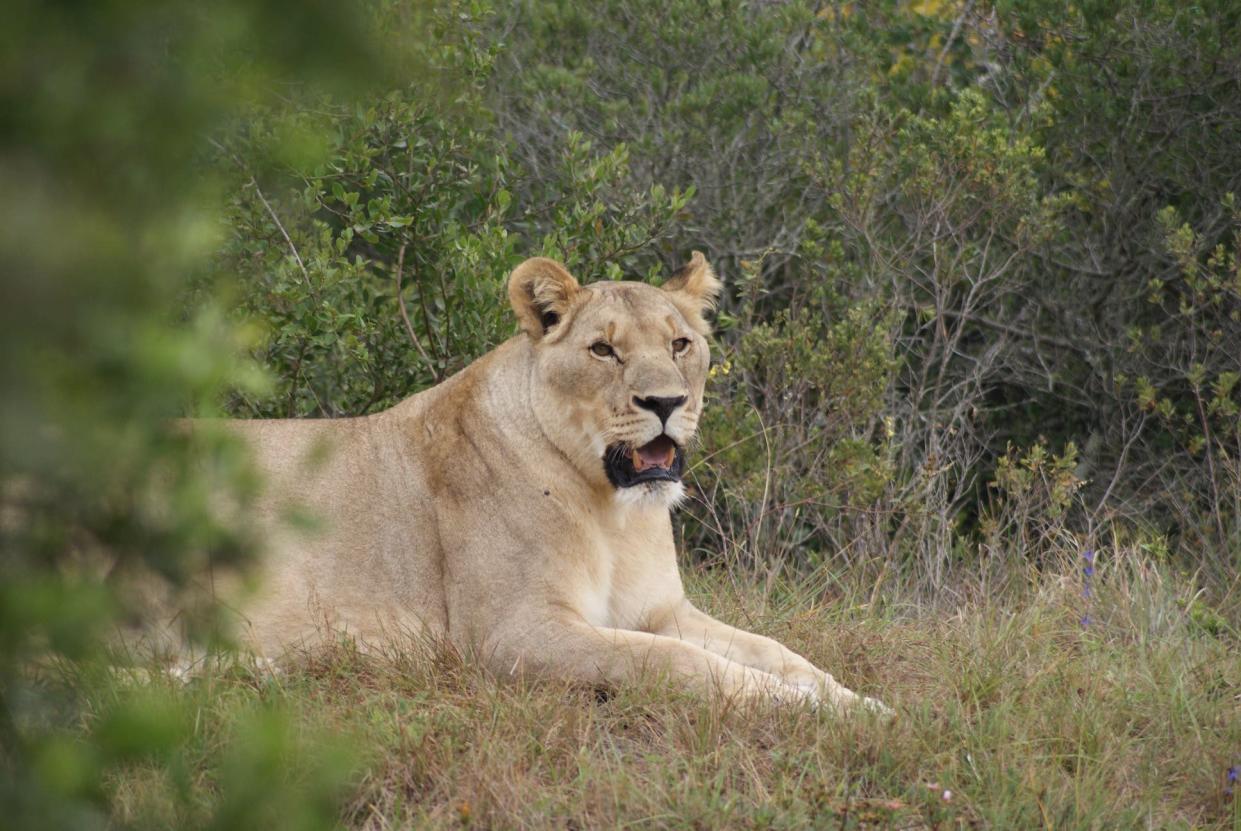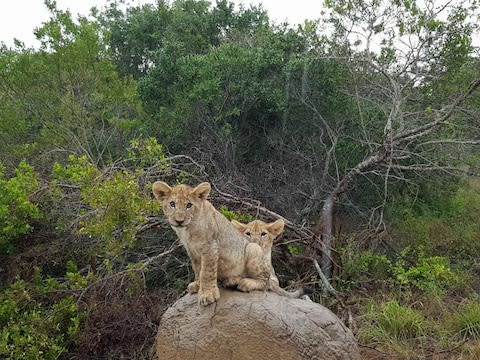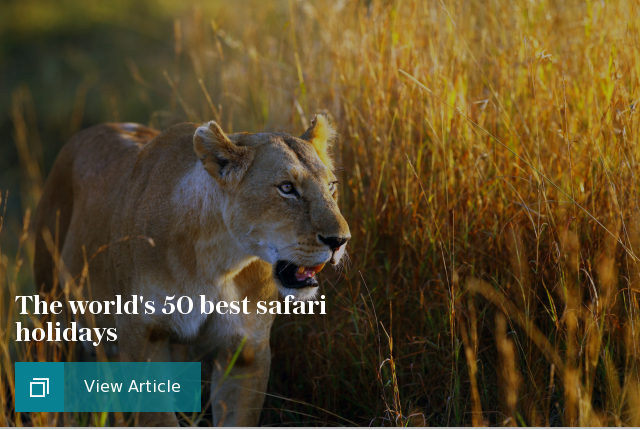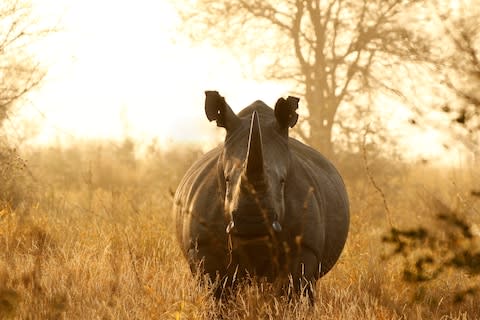My meeting with the poacher-eating lions of Sibuya Game Reserve

A hush descends inside the jeep as we emerge from a dusty track onto a grassy plain at the Sibuya Game Reserve in South Africa’s Eastern Cape, and head ranger Kent raises his hand to indicate a sighting. Just a few metres away, a pride of lions are basking in the evening sun. We are breathtakingly close, and they are magnificent - but, warns Kent, also particularly dangerous, with a pregnant female and an edgy mother in their midst.
We watch for a while in awed silence as the male of the pride stares back, and then respectfully retreat. It’s these lions that, just a few weeks later, would be responsible for the deaths of three suspected poachers apparently intent on killing rhino for their horns.
Earlier, we’d enjoyed a similarly close sighting of two young rhino who, munching away and breathing easily, seemed entirely unfazed by our presence - a confidence perhaps attributable to the round-the-clock efforts of anti-poaching patrols. This omnipresent guard, while having the unwelcome side-effect of normalising human contact for the rhino, is all too necessary.

Two years ago, the rhino’s mothers were among three rhino butchered at the reserve; their horns carved from their skulls by poachers to retain maximum value. The babies were found traumatised by the bloodied bodies of their mothers and, too little to survive by themselves, were sent to a rehabilitation centre where they were bottle fed for over a year. The orphaned calves, Nu-nu Noelle and Winston were finally returned to Sibuya in 2017 and their protective patrols include hot and cold scent dogs - the latter of which today are still combing the reserve for signs of other poachers who may have escaped the lions.
Back at the solar powered, sun-dappled, tented camp at Sibuya, over hearty meals at the lodge’s communal wooden dining table, we have time to learn more. Three subjects dominate the hearts and minds of the ever-present rangers: conservation, combating the ever-present threat of rhino poaching, and how to keep the tourists coming who fund both - and they have endless stories and tales of derring-do to bring all of them alive.

After all, there’s a lot to conserve: the ancient floodplains and pristine coastal forest host nearly 400 types of bird and 45 other species of wildlife. Alongside the rhinos and lions there are giraffe, impala, wildebeest and elephants (we have our own Jurassic Park moment with a mother elephant who comes right up to the jeep and eyeballs us, before her trunk sniffs us suspiciously - then showers us all with elephant snot). There is also African hoo hoo, warthogs, and nyala, as well as some wild kittens that hang around the lodge. Sibuya’s rangers - who approach their jobs more as vocations - know them all: their personalities, their favourite spots, their nicknames. They love them like pets - but they never forget they are wild animals.

Stays at Sibuya, which is set along the stunning Kariega River Estuary, include twice daily game drives across steep, rocky inclines and vast lush expanses of plains, river fishing, picnics and some spectacular stargazing, along with comfortably rustic accommodation (think oversized squishy sofas and convivial communal areas, a well-stocked bar of fine complimentary South African wines, and spacious tented rooms complete with king-size bed and crisp linen, cosy camp beds for the kids, actual windows and separate bathroom with double sinks and free-standing bath). As part of their rate, guests also pay a rhino levy to help fund the ongoing efforts to protect the animals.

Together with neighbouring reserves, owner Nick Fox has formed the Association of Eastern Cape Reserves (Indalo) - which just a month ago was given protected status as part of South Africa’s overall conversation efforts. But it’s never enough. They would need, he says, ‘a small army’ to adequately patrol the 50km of game fence.
On our final game drive, the jeep revs up one last bumpy, dusty track and over the brow of the hill, revealing a panoramic view of the game reserve that surrounds them. Head ranger Kent rustles up some welcome G&Ts and we clink glasses. We feel on top of the world. Below us, from somewhere on the plain, we hear a lion roar, reminding us just who rules that world.
To find out more and to book, visit sibuya.co.za

